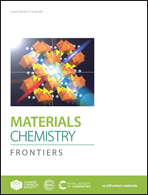Thiol for interfacial modification to improve the performance of lithium–sulfur batteries†
Abstract
Lithium–sulfur (Li–S) batteries are considered as one of the most promising next-generation secondary batteries. However, the shuttle effect of soluble polysulfides in the electrolyte seriously affects the performance of Li–S batteries. In this paper, 4,4′-thiodibenzenethiol (TBBT), with two thiol functional groups, is introduced into the electrolyte as an additive to suppress the shuttle effect. TBBT captures polysulfides to form organic sulfide during the charge–discharge process, changing the existing form of active materials and effectively limiting the generation of long-chain polysulfides, leading to a long cycling life. The battery with the TBBT-containing electrolyte exhibits a high initial discharge capacity of 994.4 mA h g−1, which still maintains 752.7 mA h g−1 after cycling for 300 cycles at 0.5C. Meanwhile, a Li–S pouch cell with the TBBT additive shows a better cycling stability with a capacity retention rate of 65% after 30 cycles compared with the blank sample. In summary, this work provides an effective strategy to relieve the shuttle effect by introducing TBBT to change the existing form of active materials from long-chain polysulfides to organic sulfide during cycling.



 Please wait while we load your content...
Please wait while we load your content...